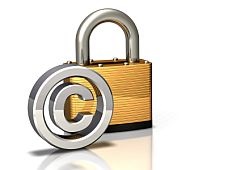17 USC 116 – Negotiated licenses for public performances by means of coin-operated phonorecord players
(a)
Terms Used In 17 USC 116
- establishment: is a store, shop, or any similar place of business open to the general public for the primary purpose of selling goods or services in which the majority of the gross square feet of space that is nonresidential is used for that purpose, and in which nondramatic musical works are performed publicly. See 17 USC 101
- phonorecords: includes the material object in which the sounds are first fixed. See 17 USC 101
(b)
(1)
(2)
(c)
(d)
(1) A “coin-operated phonorecord player” is a machine or device that—
(A) is employed solely for the performance of nondramatic musical works by means of phonorecords upon being activated by the insertion of coins, currency, tokens, or other monetary units or their equivalent;
(B) is located in an establishment making no direct or indirect charge for admission;
(C) is accompanied by a list which is comprised of the titles of all the musical works available for performance on it, and is affixed to the phonorecord player or posted in the establishment in a prominent position where it can be readily examined by the public; and
(D) affords a choice of works available for performance and permits the choice to be made by the patrons of the establishment in which it is located.
(2) An “operator” is any person who, alone or jointly with others—
(A) owns a coin-operated phonorecord player;
(B) has the power to make a coin-operated phonorecord player available for placement in an establishment for purposes of public performance; or
(C) has the power to exercise primary control over the selection of the musical works made available for public performance on a coin-operated phonorecord player.
